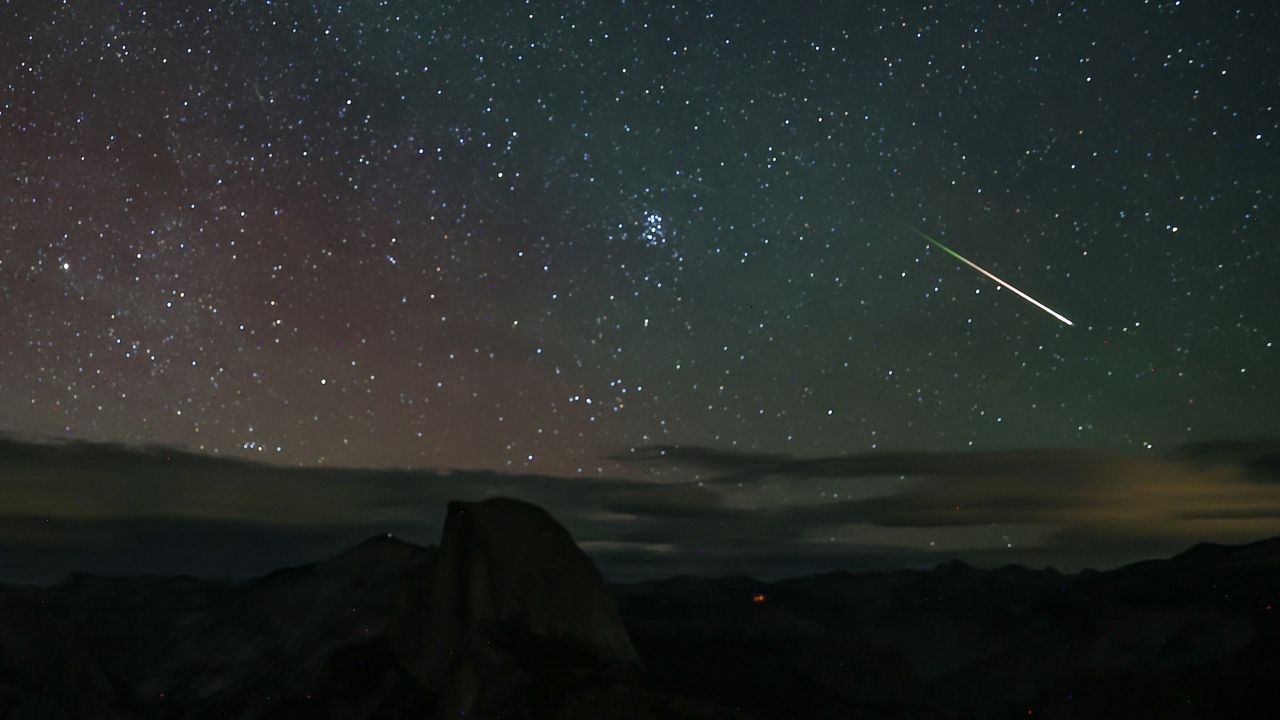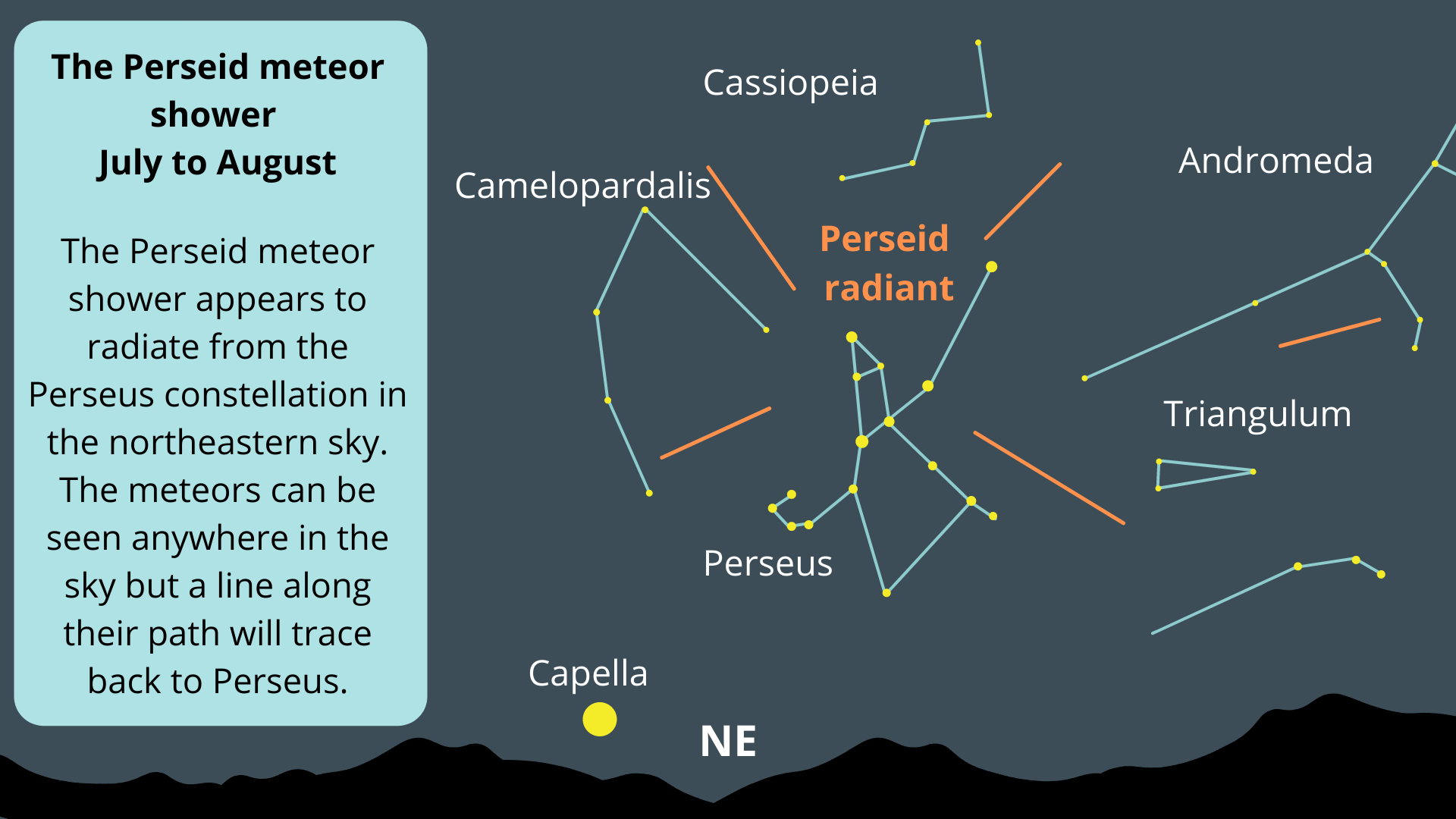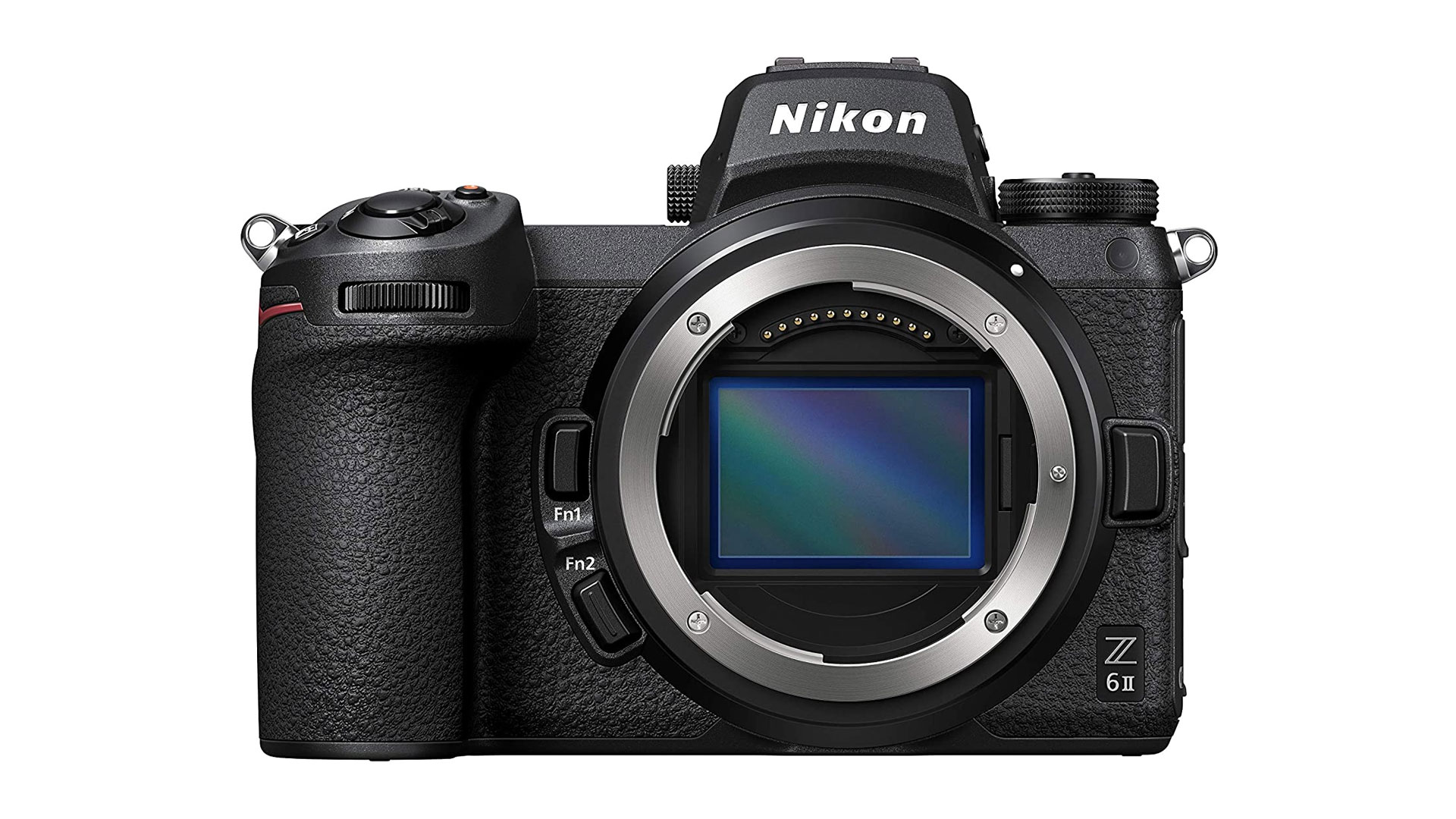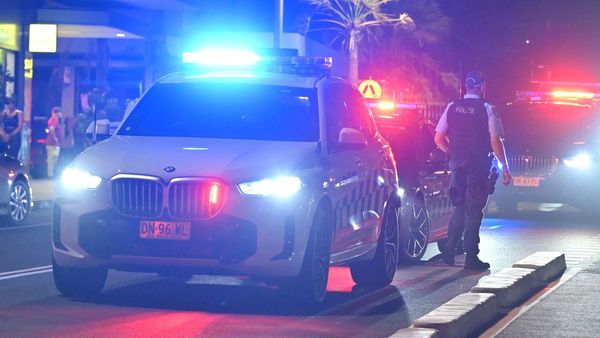
Get ready stargazers: the Perseid meteor shower peaks next week, Aug. 12-13, bringing up to 100 shooting stars per hour, along with the potential for dazzling fireballs
The Perseid meteor shower occurs each year as Earth barrels through the trail of ancient debris shed by comet 109P/Swift-Tuttle. These cometary fragments — often no larger than a grain of sand — collide with Earth's atmosphere at speeds of up to 37 miles (59 kilometers) per second. The resulting friction swiftly vaporizes the debris, creating the bright flashes that we see as fiery "shooting stars".
Perseid meteors are known for the long wakes that they leave behind as they blaze through the sky. The shower is also famous for producing dramatic fireballs — unusually bright meteors that can outshine even the brightest planets.
This year's spectacle comes with one major caveat: moonlight. The 80% illuminated waning gibbous moon will rise a few hours before midnight on Aug. 12 and remain high above the southern horizon until dawn, washing out all but the brightest meteors.
Despite the moonlight, the Perseids could still put on a nice show. They will appear to emanate from a point of origin — known as a radiant — located near the star Eta Persei in the constellation Perseus, which climbs high in the summer sky in the hours leading up to dawn around this time of year. Those new to stargazing can find the constellation with the help of a smartphone astronomy app, many of which make use of augmented reality technology to help pinpoint the precise locations of specific stars.

Perseids are best viewed in the hours preceding dawn on Aug. 13, when the radiant is at its highest in the northeastern night sky, though it's possible to spot meteors belonging to the shower as early as 10 p.m. local time.

Looking to image a Perseid meteor for yourself? Then be sure to check out the Nikon Z6 II, which features a rugged design perfect for hunting shooting stars. Read our review of the Nikon Z6 II to discover everything else we loved about it.
You can maximise your chances of seeing meteors with the longest tails by allowing your night vision to adjust in a dark sky location for 30 minutes and gazing approximately 40 degrees above the radiant relative to the horizon. Remember, the width of your clenched fist held at arm's length against the night sky accounts for approximately 10 degrees.
Editor's Note: If you capture a picture of a Perseid meteor and would like to share it with Space.com's readers, then please send your photo(s), comments,name and location to spacephotos@space.com.







